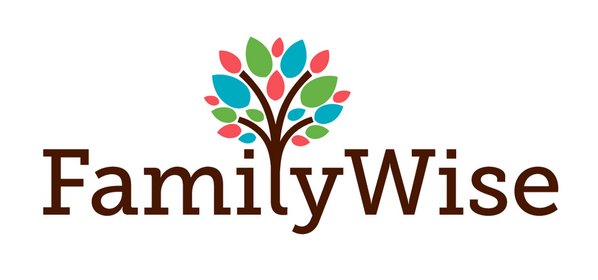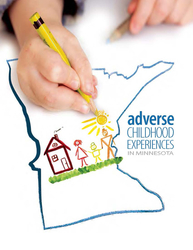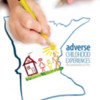After the disappointing news that the state’s application for CDC’s Preventing ACEs: Data to Action (PACE: D2A) program was not successful, Minnesota Department of Health (MDH) staffer Kari Gloppen, who was involved in writing the proposal, was thrilled and surprised when CDC granted $400,000 annually in funding for the final two years of the three-year program. Before the stunning reversal, Gloppen along with Catherine Diamond, now co-principal investigators for the PACE: D2A program, strategized to see how at least some of the activities covered in the application could be accomplished through other state initiatives. When the award was made, MDH hit the ground running with the new funding and the benefit of sharing challenges and successes with other awardees and CDC officials.
Minnesota’s surveillance goals are similar to those of the other awardees, but its proposal is uniquely focused on American Indians and families impacted by incarceration. Minnesota chose two prevention strategies from a menu of six: promoting social norms and ensuring a strong start for children.
Engaging indigenous men and boys in violence prevention
One of Minnesota’s strategies to support social norms change is to develop and pilot a program engaging Indigenous men and boys in violence prevention, including violence in their communities. The state is working with the Minnesota Indian Women’s Sexual Assault Coalition (MIWSAC) to develop a prevention intervention using the organizational expertise of Indigenous trauma-informed approaches to violence prevention (see attached Project Abstract and Logic Model). Gloppen says the MIWSAC will include culturally based and resonant approaches, designing the intervention and evaluation using the strengths and assets of American Indian communities in Minnesota. She anticipates that one or two small pilots of the “Men and Boys Allies in Prevention” intervention will be conducted in year one and expand pilots in year two to more communities in Minnesota. MIWSAC is also working on an evaluation plan for the project.
Providing high quality childcare and services to children with incarcerated parents
 The second prevention strategy to ensure a strong start for children involves working with FamilyWise (the Minnesota chapter of Prevent Child Abuse America) to develop and implement learning opportunities for Department of Corrections staff. These opportunities will include information on the prevalence of ACEs and importance of ACEs prevention and trauma-informed practices and how to help parents who are incarcerated enroll their children in high-quality childcare and preschool using Help Me Connect.
The second prevention strategy to ensure a strong start for children involves working with FamilyWise (the Minnesota chapter of Prevent Child Abuse America) to develop and implement learning opportunities for Department of Corrections staff. These opportunities will include information on the prevalence of ACEs and importance of ACEs prevention and trauma-informed practices and how to help parents who are incarcerated enroll their children in high-quality childcare and preschool using Help Me Connect.
 Gloppen says the 2011 Behavioral Risk Factor Surveillance Survey (BRFSS) and the Minnesota Student Survey show that the most common ACE in Minnesota was having an incarcerated parent, remaining second now only to having a parent with mental illness. Another related project of the MDH and the University of Minnesota on model practices in county jails (see attached summary) reports that recent data from the state “indicate that more than two-thirds of adults in jail are parents with minor children, most lived with one of their minor children before their arrest, and a majority are interested in participating in parenting education.” (The bolded text is from the summary).
Gloppen says the 2011 Behavioral Risk Factor Surveillance Survey (BRFSS) and the Minnesota Student Survey show that the most common ACE in Minnesota was having an incarcerated parent, remaining second now only to having a parent with mental illness. Another related project of the MDH and the University of Minnesota on model practices in county jails (see attached summary) reports that recent data from the state “indicate that more than two-thirds of adults in jail are parents with minor children, most lived with one of their minor children before their arrest, and a majority are interested in participating in parenting education.” (The bolded text is from the summary).
 Gloppen said the project is committed to trying to put the “P” not just in preventing ACEs but including the positive childhood experiences and taking an intergenerational approach that focuses on “quality childcare and early education, and addressing what parents need to be happier and healthier and better able to raise their children in the best possible way.”
Gloppen said the project is committed to trying to put the “P” not just in preventing ACEs but including the positive childhood experiences and taking an intergenerational approach that focuses on “quality childcare and early education, and addressing what parents need to be happier and healthier and better able to raise their children in the best possible way.”
Gloppen says the project is also seeking to link the PACEs 2A program with the work being funded by a major preschool development grant in the state, trying not to duplicate but build on those efforts being led by the Department of Education. The education department’s expertise in what constitutes quality childcare and early childhood education is invaluable to the PACE: D2A project, according to Gloppen.
The ”Help Me Connect” navigator tool should be useful in connecting families impacted by incarceration with services but Gloppen expressed concern about whether there are enough services available to meet the need. It may be a great tool, she says, but it is not certain that there will be slots open to fill the need.
According to Gloppen, the overall MDH project is emphasizing coordination and collaboration among state agencies with jurisdiction and expertise on issues that relate to the project such as the Departments of Corrections, Human Services, Education, and others. For example, Help Me Connect—a navigator tool to connect parenting families with young children with services in their communities—is a joint initiative between Minnesota's Departments of Education, Health and Human Services, and the Governor’s Children’s Cabinet.
Surveillance
The abstract says that the project will use a “participatory model to engage a statewide stakeholder group, including other state agencies, community-based organizations, community members, and decision-makers in sustainable and effective ways to enhance our existing state surveillance infrastructure for ACEs… “ Gloppen describes her excitement about the development of a data dashboard for ACEs related indicators as a tool for planning at the local level—the dashboard will be interactive, with filters by geography for different indicators. Because Minnesota has some pretty small counties, some of the data will be county-level, according to Gloppen, but some data might be available by school district or even zip code.
Conclusion
During a December 15, 2021 Campaign for Trauma-Informed Policy and Practice (CTIPP) webinar, Phyllis Ottley, PhD, associate chief of program, in CDC’s Division of Violence Prevention, National Center for Injury Prevention and Control, said the goal of PACE: D2A is to address and support statewide needs to measure and track and prevent ACEs—data is needed to identify what the problem is and where to intervene. Awardees, according to Ottley, are expected to first assess their current capacity to be able to monitor ACEs outcomes and indicators and then to determine how those strategies are actually working in the field. The outcome evaluation process should yield useful guidance to other states doing similar work.
The PACE: D2A awards have the potential to further energize an already blossoming movement of statewide community-based initiatives to address ACEs (See the MARC survey report on ACEs, trauma, and resilience networks across the country). Congress appropriated $4 million in FY ’20 and increased it to $5 million in FY ’21 to fund PACE: D2A and “to inform how ACEs increase certain risk factors, such as substance abuse, suicide, mental health conditions and chronic illnesses,” according to Ottley. Lessons from the four states—Georgia, Massachusetts, Connecticut, Minnesota—and the two non-profits in Michigan and New Jersey—should provide practical guidance to others on how knowledge of ACEs can transform society’s intractable problems into solutions






Comments (0)